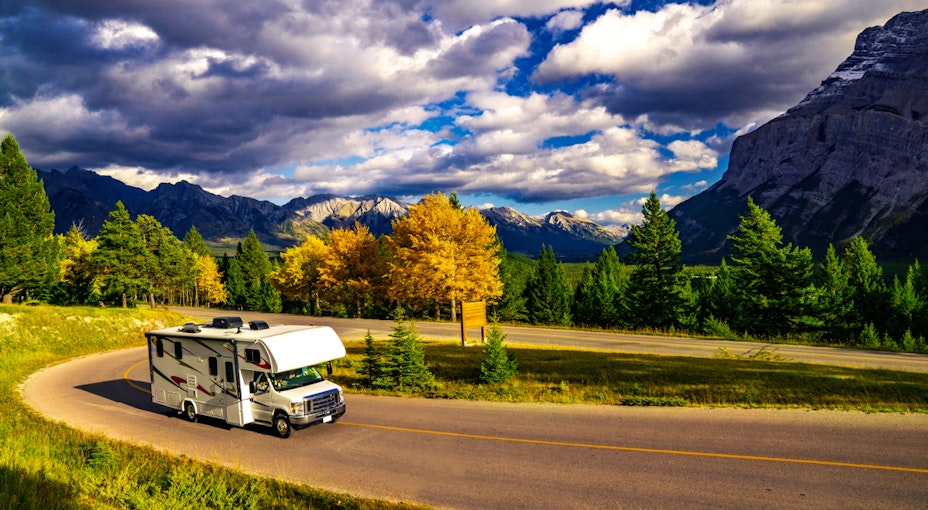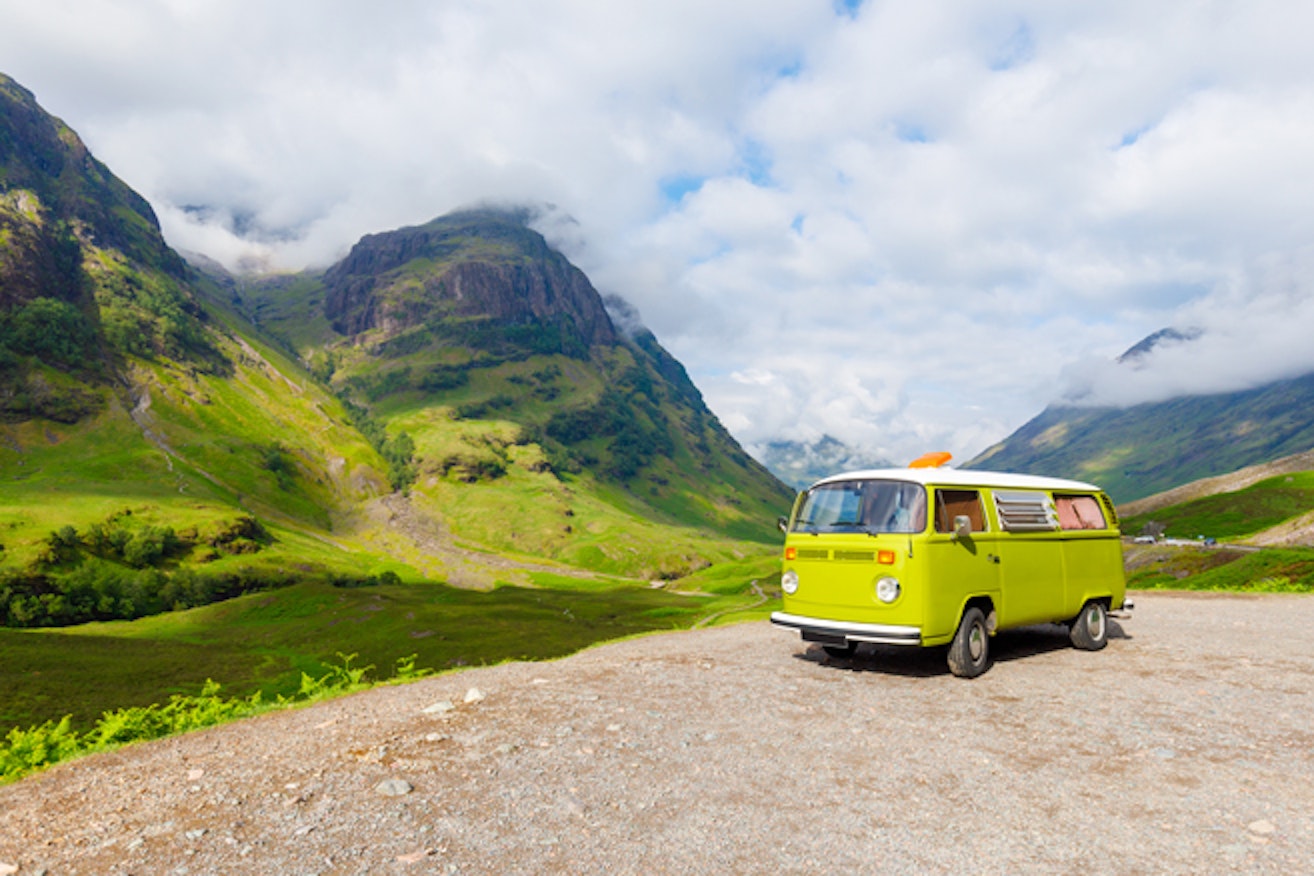Guide to the different classes of motorhome and campervans
If you’re new to the world of motorhomes and campervans, you may not be familiar with the different classes of vehicles available. We’ve put together this short guide to the different classes of motorhomes and campervans to help you with your search for a new vehicle.
By Alan Boswell Group

In this article
What are the different types of campervan and motorhome classes?
There are three main classes of vehicles in the UK for motorhomes and campervans - Class A, B, and C. Some people will use these terms interchangeably though, so it’s good to know the main features of each one.
You may also hear motorhomes referred to as recreational vehicles or RV’s, which is a term that’s popular in America and tends to be used to refer to all types of mobile home. In the UK, vehicles must meet certain criteria for the relevant class, with motorhomes generally falling into Class A or C, and campervans under Class B.
What is the main difference between classes and how are they different?
There are some main differences between the three classes, so here’s how they break down.
What is a Class B vehicle?
Class B vehicles are commonly referred to as campervans and generally use a commercial van as their basis. Using space efficiently is key, and most are fitted out with a range of utilities such as a bench seat that converts into a bed, a table, a small kitchen, and sometimes a toilet. Their simplicity often appeals to people who are new to van life and can be thought of as a van with sleeping and cooking facilities on board.
They are the smallest option on the market, and generally have a maximum length of 25 feet, but this gives them the advantage of being easier to manoeuvre than their Class A and C counterparts. These smaller vehicles are usually cheaper to purchase, consume a smaller amount of fuel, tend to cost less to maintain, and they give you access to the widest range of campsites.
Benefits
Cheaper than other classes to purchase;
Relatively economical to run in comparison with other classes;
You’re unlikely to fall foul of access restrictions and shouldn’t need to tow a car to explore;
Flexible enough to use as a day-to-day vehicle;
Easier to park than other classes.
Drawbacks
Limited facilities;
Limited storage space;
May not have space for bathroom facilities on board;
Wet weather trips can prove challenging due to the lack of space, especially when cooking.
What is a Class C vehicle?
Bigger than a Class B campervan but smaller than a Class A motorhome, Class C motorhomes generally range from 20 – 33 feet long and are typically built on a van chassis. They are normally big enough to sleep up to six people across multiple sleeping areas.
Class C vehicles tend to have the advantage of offering a similar level of facilities as a Class A vehicle such as insulation, heating, fridges, toilets, and more, but without the higher price tag.
Benefits
Affordable compared with their Class A cousins;
More facilities and features than a Class B campervan;
Good amount of space;
Well insulated;
A range of styles, sizes, and layouts are available;
Easier to drive and park than a Class A motorhome due to their size;
Lower fuel and maintenance costs than a Class A vehicle.
Drawbacks
Higher fuel and maintenance costs than a Class B campervan;
Some models have sealing issues between the cab and living area
Larger Class C vehicles may limit the range of campsites you can use or mean you need to opt for a bigger, more expensive pitch.
You may need to pay higher tolls on some roads and ferries.
What is a Class A vehicle?
Class A vehicles are the largest and most prestigious class in the motorhome family and typically have the most luxurious facilities along with plenty of space, while the cab is normally integrated into the living space. Due to their size you can generally tow a trailer with them as well.
In terms of mechanics, they’re usually built on a truck or bus chassis and their engines are generally found at the rear of the vehicle.
In Europe, a Class A motorhome will generally be around 25 feet long but can scale up to 40 feet, although larger vehicles are more common in the USA. As a result, they have space for luxuries that other classes can’t necessarily fit in such as bathrooms, fridges, and larger living spaces with room for entertaining, as well as extras like heating and air conditioning. They are therefore considered to be the most comfortable class of vehicle and are ideal for large groups, with some sleeping up to eight people.
The main downside of Class A vehicles is the price, with new models starting at around £45,000.
Benefits
Increased living space and comfier travel experience;
Include bathrooms/toilets for fully self-contained travel;
Best option for larger groups;
Great if you’re travelling to fewer places for longer periods of time;
Increased storage space is ideal for long-term travel;
The cab is part of the motorhome allowing the seats to be used when parked;
Generally, well insulated.
Drawbacks
Expensive to purchase;
Higher running and maintenance costs, including lower fuel efficiency;
Can be trickier to drive than other classes, with limited parking options;
Increased costs for tolls and ferries;
May not be accepted on all campsites;
Limited accessibility to rural areas with narrow roads;
A second smaller vehicle may be needed for exploring further afield;
The engine can be difficult to work on, as many models have restricted access.
Checking your vehicle height
Whatever class of vehicle you buy it’s important to be aware of its height as you’re bound to encounter a height restricted road at some point, whether it be due to a bridge or signage. We’d always advise taking caution with the limits stated in these situations as even something simple like repaving a road can alter access heights.
FAQs
Do I need a special licence to drive a Class A, B, or C motorhome or campervan?
Certain vehicles may require a different license to allow you to drive them, so it’s worth considering this when you’re deciding which class of campervan or motorhome is your best option.
You will need to be licensed to drive in one of two categories if you plan to drive a motorhome or campervan in the UK. Your age and the maximum authorised mass (MAM), as outlined by the DVLA, will determine the type of licence you need.
If your vehicle has a MAM of 3.5 to 7.5 tonnes, you will require a category C1 licence
For vehicles with a MAM over 7.5 tonnes, a category C licence is required
Class A vehicles will always require a category C licence, but Class C vehicles could fall into C or C1. In comparison most Class B models will be suitable for C1 category licence holders, although you should check carefully before you drive any vehicle for the first time.
Read our guide to campervan and motorhome licences for more information.
Can you tow another car with a Class A, B, or C motorhome or campervan?
It is possible to tow with your motorhome or campervan and as we mentioned earlier, if you own a larger Class A vehicle you may find that you need to tow a smaller, second vehicle to allow you to explore beyond the campsite. Take a look at our guide to towing with your campervan or motorhome for full details.
Are you allowed to park a Class A, B, or C motorhome or campervan on the street?
Whatever your class of vehicle, where you’re allowed to park can vary across the different nations of the UK, but it’s important to note that you can’t park wherever you like. For full information check out our blog post on parking laws in the UK for motorhome and campervan owners.
Are Class A, B, or C motorhome and campervans classed as a commercial vehicle?
The rate of vehicle tax for your motorhome is based on the vehicle’s revenue weight (also known as maximum or gross vehicle weight). However, there are also variations depending on your engine size and date of registration, so it’s best to consult the government website for a full breakdown.
You should also be aware that the DVLA doesn’t always change the vehicle classification appropriately if you have a converted van, so it could be listed as a van with windows rather than a campervan, so it’s best to make sure the DVLA record is correct.
Does the insurance cost change on a Class A, B, or C motorhome or campervan?
As with any vehicle, the premium you pay for your insurance will be based on a range of factors, and the class of your vehicle is an important element of this. Make sure you speak to your insurer and give them full and accurate information about your vehicle to ensure you are insured correctly.
You should also be sure to inform your insurer of the usage of your vehicle if you are renting it out to other drivers. If this is the case, you will need specialised self-drive hire insurance.
The importance of specialised campervan and motorhome insurance.
It’s important to take out insurance that is appropriate for you, your vehicle, and it’s usage. At Alan Boswell Group we arrange motorhome and campervan insurance for personal use, as well as self-drive hire insurance for when your vehicle is being rented out to other drivers.
Need help with your insurance?
Whether you need a quote, have a general enquiry, or want to talk it through over the phone, we're here to help.
SDH & motorhome insurance enquiry
Related guides and insights

Guide to campervan and motorhome licences
If you’re considering buying a campervan or motorhome, you'll need to consider the type of license you need. We explore what type of driving licence you need in order to drive different motorhomes, as well as what you can do to upgrade your licence.

Guide to driving your motorhome or campervan abroad
If you’re thinking about taking a trip to Europe in your campervan or motorhome there are a few things you need to be aware of, so we’ve put together this comprehensive guide to set you on the right track.

Guide to motorhome and campervan maintenance
We’ve compiled the ultimate guide to help you maintain your campervan or motorhome from what to check before you buy one, to upkeep, pre-trip checks, and what to do when you arrive at your destination.

How to avoid underinsuring your motorhome or campervan
A shortage of new motorhomes and campervans means that many second-hand vehicles are rapidly increasing in value. While good news for self-drive hire vehicle owners, it does increase the risk of being underinsured.
